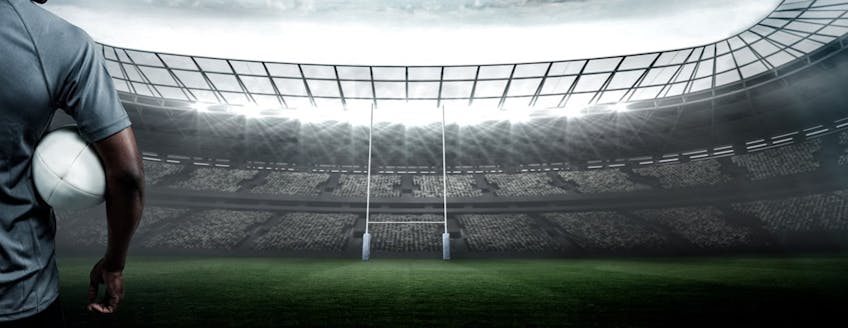The MaxiNutrition guide to rugby
With the 6 Nations just around the corner, its time to dust of that rugby shirt and wear your patriotism with pride.
If your knowledge of the game is somewhat lacking, take a look at the MaxiNutrition's bluffer’s guide to rugby and get ready to enjoy all the action this year.
The Game
A rugby union game is played by two teams of 15 players, although the match squad comprises of 22. Of the 15 players, there are eight forwards and seven backs. The ball can only be passed backwards and the aim of the game is to score as many points as possible.
There are three main ways to score points:
- Try: A try is worth five points, which are given when a team grounds the ball across the opposing team’s try line.
- Conversion: If a try is scored, the team gets a chance to score an additional two points via a conversion. This involves the player kicking the ball over the crossbar and between the posts.
- Drop goal: Like a conversion, a drop goal involves kicking the ball between the posts. This occurs in open play but can only be attempted once the ball has bounced off the turf.
In addition to ways to score, you’ll need to know about these crucial aspects of the game:
Scrum
To restart play after a foul or stoppage, players must engage in a scrum. Arranged in three rows with interlocking heads, eight players from each team attempt to get the ball into their possession using their feet.Lineout
If a ball goes beyond the side lines or touchlines, a lineout occurs. During a lineout, each team forms two rows. When the ball is passed between these rows, players hoist their team mates in the air in order to secure possession.Maul
If a player is stopped by an opponent yet remains standing, a maul takes place. The person with the ball is pushed by other players until he falls to the ground.Ruck
When the ball is on the ground after a battle for possession, players will start a ruck. They will gather around the ball and use their feet to try and gain possession for their team.The Positions
Props
Whether you’re a loose- or tight-head prop, you’ll play a huge part in scrums, helping to support the line-out and tackle the opposing team. You’ll have to be strong and powerful to protect the hooker, while also able to run at speed.Hooker
The hooker plays an important role when it comes to line-outs and scrummaging. As such, you’ll have impressive pace while running and be able to handle the ball effectively to deliver results. Powerful shoulders and legs will give an advantage when packed down too.Second Row
Strength and power are key if you’re considering playing second row. You’ll be responsible for locking and pushing the scrum, becoming almost immovable while producing the majority of pressure. You’ll need to be quick when jumping for the ball too.Blind-side Flanker
As a blind-side flanker, you’ll be responsible for stopping the opposition from crossing the advantage line. You’ll have an imposing presence and be physically robust.Open-side Flanker
The open-side flanker is responsible for restoring continuous play after rucks and mauls. You’ll need strength, power and speed to succeed.Number 8
The team member who plays the position of number 8 secures possession of the ball during scrums. You’ll have to be confident and imposing in order to intimidate the other team. You’ll need to release wingers, the fly-half and the full-back too.Scrum-half
If you want to play as a scrum-half, you’ll have to have exceptional kicking and passing skills. You’re responsible for delivering the ball from the base of the scrum, so you’ll need to be strong, confident and an effective decision-maker.Fly-half
The fly-half is an incredibly important position, as they are responsible for managing the entire gameplay. You’ll have exceptional awareness of the events occurring around you, able to effectively make decisions to lead your team to victory.Left & right wing
Pace is crucial to left and right wing players, as you’ll need to get the ball and make space. You’ll need to be a forward-thinker, anticipating events before they happen to maximise your team’s chance of victory.Inside centre
As a position, inside centre demands a combination of strength and speed. You’ll have good tackling skills and will be tough enough to withstand multiple challenges in the game.Outside centre
The outside centre position is very similar to the inside centre role. You’ll tackle well and be able to control the ball. A strong yet athletic build will be beneficial for these players.Full-back
Typically viewed as the last point of defence, the full-back works alongside the right and left wingers to prevent the other team from scoring. You’ll need strength and pace, as you could also be used as a decoy to help your team score.
















